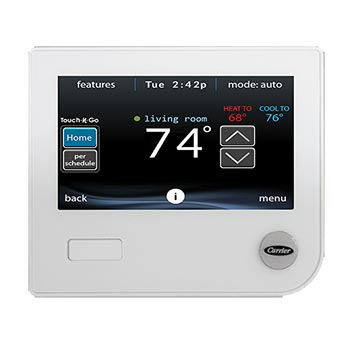Summer in Texas means soaring temperatures and the challenge of keeping the power on. Understanding why the Texas power grid struggles during these extreme conditions will help you prepare your home for potential outages.
At Wright’s Air in Greenville, TX, we’re here to help you stay cool and safe. Here’s what you need to know about our power grid issues and practical steps you can take to prepare.
The Unique Independence of Texas
Texas is unique in the United States because it has its own independent power grid managed by the Electric Reliability Council of Texas (ERCOT).
This independence dates back to the early 20th century when Texas chose to avoid federal regulation to maintain control over its energy resources.
While this setup offers benefits like self-reliance and avoiding out-of-state power failures, it also means Texas can’t easily borrow power from other states during emergencies. This situation leaves us vulnerable during extreme weather events.
Impact of Heatwaves on the Grid
When temperatures soar, the demand for electricity spikes as air conditioners work overtime to cool homes and businesses. This surge in usage can push the grid beyond its limits, especially if power generation can’t keep pace.
Causes of Grid Failures

Aging Infrastructure
Much of Texas’ power infrastructure is decades old. Natural gas plants, coal plants, and transmission lines are all aging and more prone to failures, particularly under high demand and extreme heat.
Deferred maintenance and underinvestment in upgrades exacerbate these issues, making the grid less reliable when it’s needed most.
Insufficient Power Generation
ERCOT’s grid relies heavily on natural gas, which powers over half of the state’s electricity. While natural gas is a reliable source, it has its limitations. During peak demand, the grid can quickly become overwhelmed if natural gas plants are offline for maintenance or fail due to heat.
Similarly, while wind power contributes about 25% of Texas’ electricity, it is less effective during the still days of summer when wind speeds are low.
Deferred Maintenance and Underinvestment
Years of underinvestment in grid maintenance and upgrades have left Texas vulnerable to power outages. By neglecting the need for regular maintenance and infrastructure improvements, our power grid has been reduced to a fragile system that struggles to cope with extreme weather conditions.
Recent Improvements and Ongoing Challenges
Post-2021 Winter Storm Changes
Following the devastating winter storm in February 2021, Texas implemented new weatherization standards, and ERCOT made operational changes to hold more thermal power in reserve.
These changes were designed to improve grid resilience but have not been enough to fully address the grid’s vulnerabilities, particularly during extreme temperatures.
Rapid Population Growth
Texas is experiencing rapid population growth, particularly in metropolitan areas like Austin, Houston, and Dallas. This urban boom means more homes and businesses are connected to the grid, increasing the overall demand for electricity.
Modern homes, filled with energy-hungry gadgets and appliances, further strain the grid, making it harder to maintain reliable power during peak periods.
Need for Continued Investment
Despite the improvements made after the 2021 winter storm, the grid still suffers from persistent infrastructure failures. During heatwaves, the increased load can exacerbate these failures, leading to more frequent and prolonged outages.
Building new thermal power plants is a viable option for adding power to the grid, but this requires significant investment, and current market incentives are insufficient to encourage this.
How Homeowners Can Prepare
While Texas works on long-term solutions, homeowners can take steps to prepare for power outages and reduce their energy consumption.
Preparing for Outages
Backup Power: Investing in a generator or battery backup system can provide peace of mind during outages. Ensure these systems are well-maintained and ready to use.
Stocking Essentials: Keep a supply of non-perishable food, water, medications, and other necessities to stay comfortable and safe during an outage.
Emergency Plan: Develop a plan that includes communication strategies, safety procedures, and contingency plans for family members and pets.
Reducing Energy Consumption

Smart Thermostat Settings: Optimize your thermostat settings to save energy. Set it a few degrees higher when you’re not home or at night. Smart thermostats can adjust settings based on your habits.
Energy-Efficient Appliances: Lower your electricity use by using energy-efficient appliances and LED lighting. These devices consume less power, reducing strain on the grid and saving you money.
Natural Ventilation and Shading: To keep your home cool, use natural ventilation and shading. Close blinds or curtains during the hottest part of the day and use fans to circulate air.
Off-Peak Energy Use: Schedule high-energy tasks like laundry or dishwashing during off-peak hours when grid demand is lower. This helps reduce strain on the grid and can save money if your utility offers time-of-use rates.
Smart Home Technology
Smart Devices: Invest in smart home devices to monitor and manage energy use. Smart thermostats, plugs, and energy monitoring systems provide real-time data to help you make informed decisions.
Optimizing Devices: Set up smart home devices to maximize energy efficiency. Program your smart thermostat to adjust temperatures based on your schedule. Use smart plugs to control when appliances are on or off.
Long-Term Strategies
Home Insulation: Improve your home’s insulation to reduce cooling needs. Proper insulation keeps cool and hot air out, making your home more energy-efficient.
Renewable Energy: Explore renewable energy options like solar panels. Solar power provides a reliable electricity source and reduces dependence on the grid.
Demand-Response Programs: Participate in demand-response programs offered by local utilities. These programs incentivize you to reduce energy use during peak times, helping balance the grid.
Final Thoughts
Understanding why the Texas power grid fails during heatwaves is essential for finding solutions. While the state works on improving infrastructure and regulations, homeowners can take proactive steps to prepare for outages and reduce energy consumption.
At Wright’s Air, we are always here to help you find ways to improve your home’s HVAC efficiency and make the summer easier to enjoy. If you feel your home’s HVAC is putting unnecessary strain on the grid (and your budget), give us a call. We can suggest the best types of smart HVAC systems and thermostats to get you on the right path. Stay cool and stay prepared, Texas!

